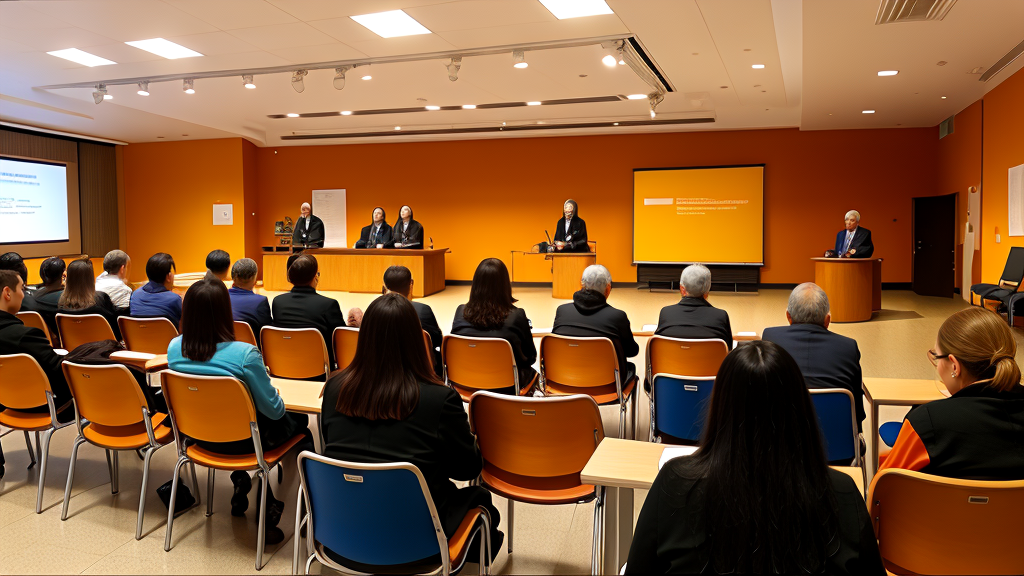Berga hosts the IV Meeting of Managers of Intangible Cultural Heritage of Humanity
From Thursday to Saturday, Berga is the headquarters of the IV Meeting of Managers of Intangible Cultural Heritage of Humanity, a congress aimed at professionals in the sector from across the Spanish State with the aim of sharing experiences and drawing lines of action for the preservation of these unique cultural expressions of the territory that have been recognized by UNESCO. The Patum of Berga is the protagonist of the conference due to its quality as host, a fact that has motivated the first conference to be precisely on the Bergadan festival, by the historian Albert Rumbo.
And an occasion that has allowed the Ministry of Culture to commit to “study all the possibilities of help we have to collaborate.” This is how the general director of Cultural Heritage and Fine Arts of the Ministry of Culture, Isaac Sastre, expressed himself in statements to the press, where he confirmed that “relations with the Berga City Council are magnificent” and that, for this reason, ” “We will hold all the necessary meetings to see how we can contribute to ensuring that La Patum continues to be celebrated in the way we all understand heritage.”
The ministry presents the Green Paper for the sustainable management of cultural heritage
In fact, Sastre has highlighted the opportunity of the Managers’ Meetings to generate spaces to share cases shared by almost all intangible heritage and, above all, “draw up roadmaps with the paths to follow, hand in hand between the managers.” “. Some needs that mainly include economic financing or pressure due to massive tourist influx.
To remedy these and other problems, the ministry has prepared and presented on the first day of the congress the Green Book for the sustainable management of cultural heritage, a tool that seeks the viability of this management at a time that, according to the general director , “we have an exhausted model and we have to remake it by valuing the traditions that have proven to have a balance between the environment and the human being who inhabits it.” In short, it is a publication “with ideas to converge on a change in the social and economic model of heritage.”
Berga, capital of popular culture of Catalonia
On behalf of the Berga City Council, the mayor, Ivan Sánchez, assessed the Meeting that “we have only been there for a few hours, but it is already a success” and recognizing that “we are very happy to be able to host this Meeting in Berga.” In this sense, the mayor recalled that it is the first time that this Spanish-wide Meeting is held in Catalan territory and, therefore, “we can say that Berga is the capital of popular culture in Catalonia.”
Isaac Sastre and Ivan Sánchez have welcomed the IV Meeting of Managers of Intangible Cultural Heritage of Humanity Photo: Berga City Council
The mayor has detailed that there are about eighty people from the sector participating in the conference, where the different conferences will focus on topics such as cultural tourism, the practices of some heritage sites and the social cohesion of these festivals. All this, while trying to expose attendees to other elements of the region’s culture, such as the Patum Museum, the Cercs Mines Museum, the Fumanya site or the Castellers de Berga. “It is a good time to put Berga on the map and an opportunity to publicize not only La Patum but other demonstrations that we have in the region,” Sánchez stressed.
The Generalitat of Catalonia also did not want to miss the occasion, which was present at the Meeting through the general director of Popular Culture and Cultural Associations, Adelaida Moya. “It is a very interesting Meeting because intangible heritage is an element that must be disseminated and disseminated well,” said Moya, who specified that “Berga has a declared festival that I think practically the entire country feels like its own, for Therefore, it was the best place in Catalonia where it could be done”. For this reason, the general director has expressed that “we hope that there is a return on the part of the ministry and that the city or La Patum can benefit from all of this.” And, as Moya has stressed: “All administrations must join forces to do our bit.”

